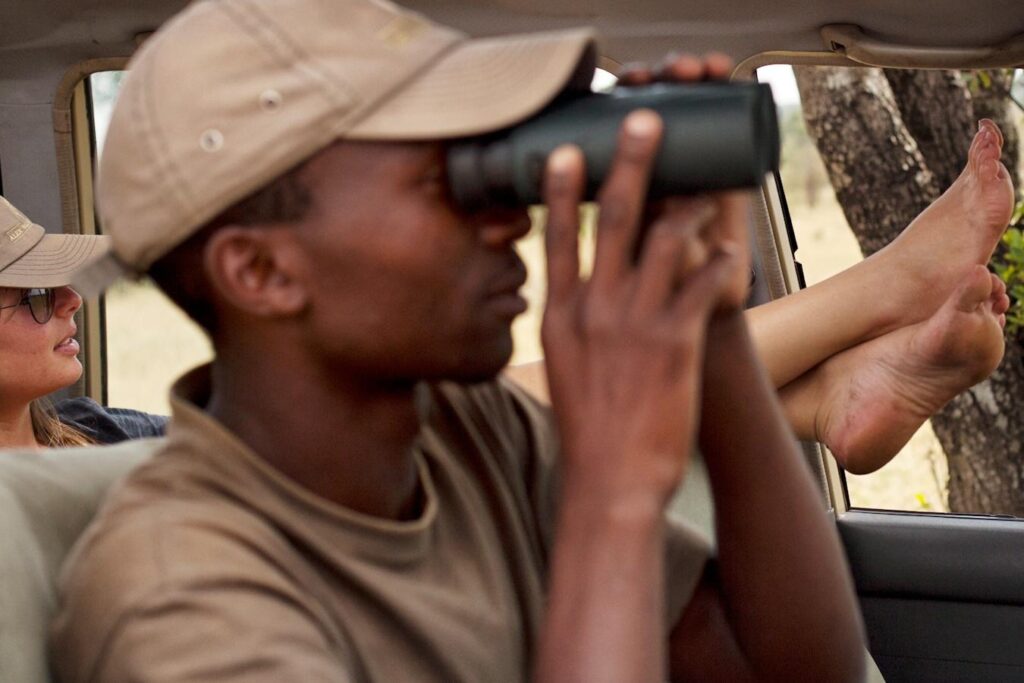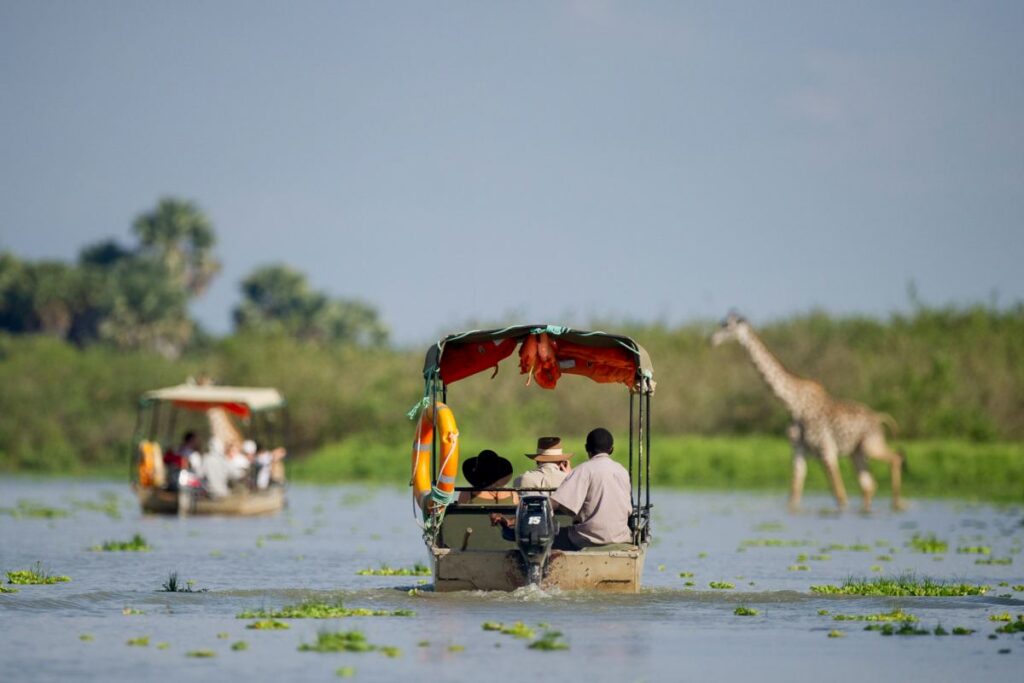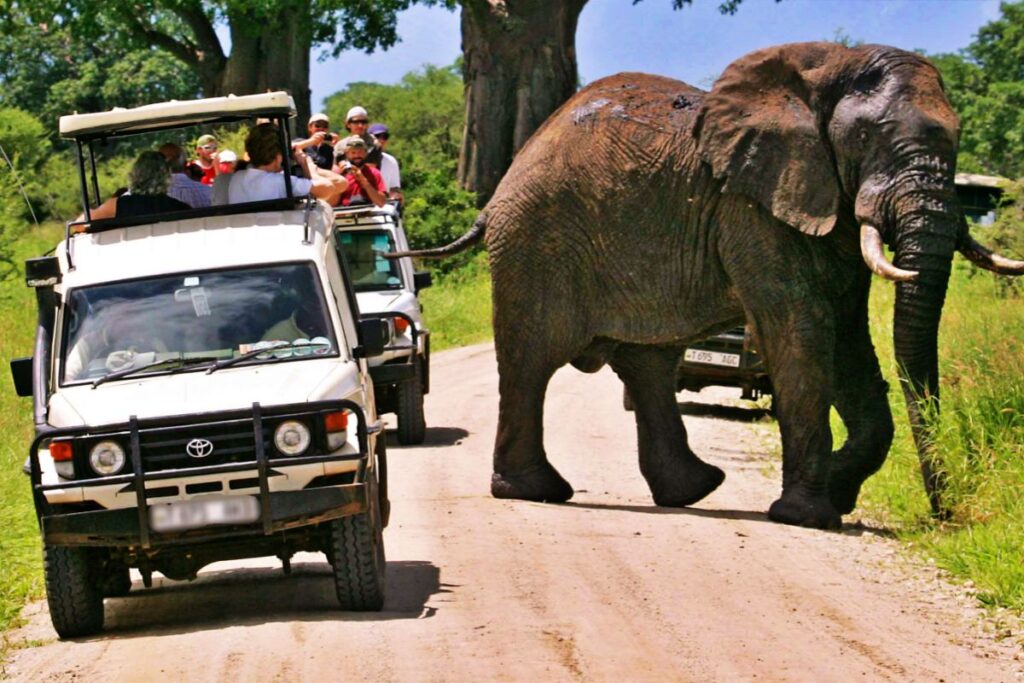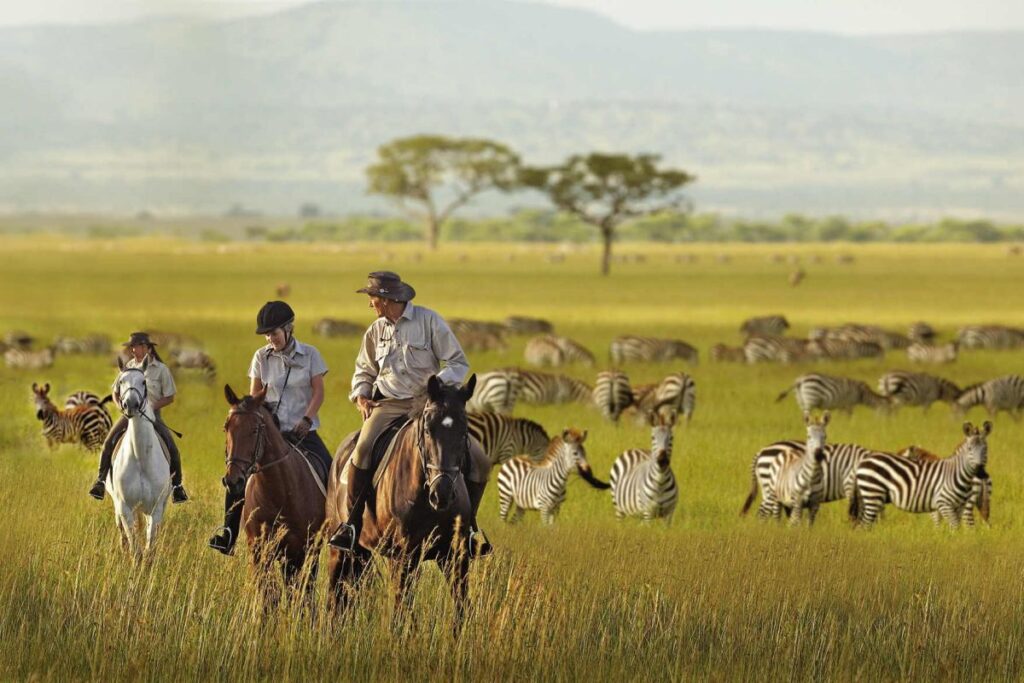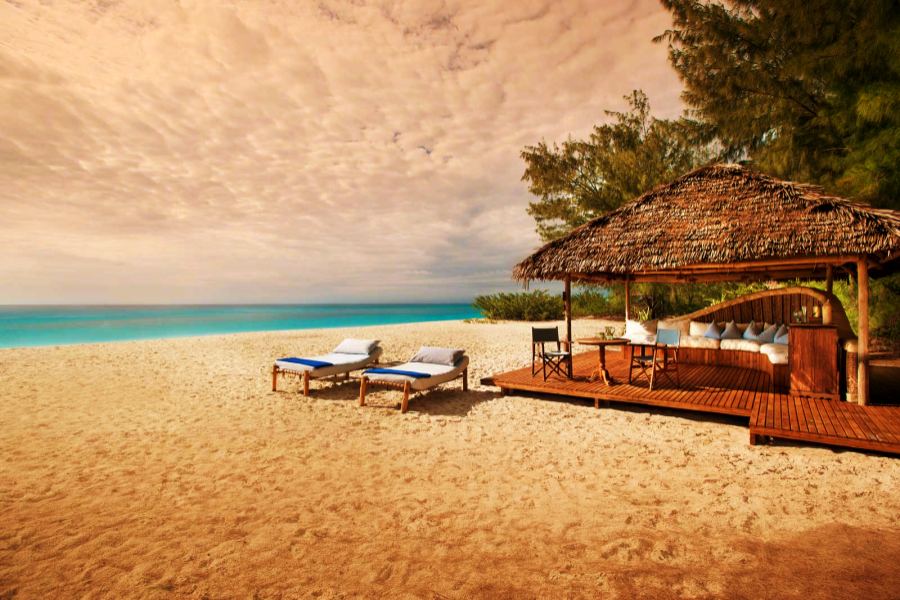Ngorongoro Crater, perched on the eastern edge of the Serengeti in northern Tanzania, is a geological masterpiece and a wildlife sanctuary of unparalleled diversity. Often referred to as the “Eighth Wonder of the World,” this natural amphitheater, formed by the collapse of a massive volcano millions of years ago, cradles an ecosystem teeming with wildlife, including the iconic Big Five.
Located within the larger Ngorongoro Conservation Area, the crater spans approximately 260 square kilometers. Its walls soar to heights of around 600 meters, creating a self-contained and enclosed ecosystem that harbors a remarkable concentration of flora and fauna.
The crater is home to an extraordinary array of wildlife, and its enclosed nature makes game viewing a unique and concentrated experience. Lions, elephants, buffalos, leopards, and rhinoceroses roam freely in this natural amphitheater. The vast grasslands, acacia woodlands, and saline lakes within the crater provide an ideal habitat for numerous herbivores, making it a prime hunting ground for predators.
The Ngorongoro Crater is renowned for hosting one of the densest populations of lions globally, creating exceptional opportunities for observing these majestic big cats in their natural habitat. The Lerai Forest, an evergreen forest within the crater, is home to elephants, monkeys, and a variety of bird species.
The crater’s soda lakes, including Lake Magadi, attract a profusion of flamingos and other waterbirds. Birdwatchers can spot an impressive variety of species, including crowned cranes, ostriches, and a range of raptors, making it a paradise for avian enthusiasts.
In addition to its natural wonders, the Ngorongoro Conservation Area holds cultural significance as it is home to the Maasai people. Maasai pastoralists coexist with the wildlife in this region, practicing traditional herding practices and maintaining a harmonious relationship with the natural environment.
Game drives within the Ngorongoro Crater provide an immersive safari experience, allowing visitors to witness the incredible biodiversity within this geological marvel. Picnic sites on the crater floor offer the chance to savor a meal surrounded by the sights and sounds of the African wilderness.
The Ngorongoro Crater is a year-round destination, but the dry season (June to October) is particularly popular for optimal wildlife viewing conditions. The short rains from November to December rejuvenate the vegetation, creating a lush landscape, while the long rains from March to May bring a vibrant burst of life.
A visit to the Ngorongoro Crater is not just a safari; it’s a journey into a living Eden, where the circle of life unfolds in one of the most awe-inspiring settings on the planet. The crater’s unique combination of geological wonders, abundant wildlife, and cultural richness makes it an integral part of Tanzania’s safari legacy.

